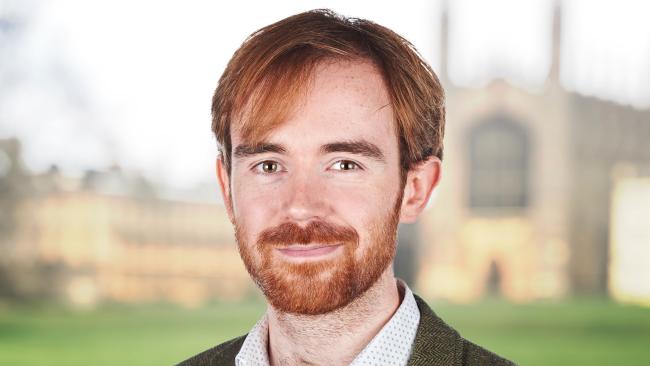
Nuclear engineer secures Postdoctoral Fellowship for modelling nuclear reactors
College Postdoctoral Associate Dr Paul Cosgrove has been awarded a three-year Engineering and Physical Sciences Research Council (EPSRC) Postdoctoral Fellowship to use a new method to investigate an alternative approach to nuclear reactor multi-physics simulations – a challenging area in nuclear engineering.
The other principal co-author of the method is Dr Mikolaj Kowalski, who studied at Jesus College as an undergraduate (2011-15) and PhD student (2016-21).
"This Fellowship will allow me to improve methods for modelling nuclear reactors in high-fidelity – making them faster, more reliable, and better able to handle extra physics all at the same time." - Dr Paul Cosgrove
Paul plans to implement and test his new method using unique software, developed by the Department of Engineering, called Stochastic Calculator Of the Neutron transport Equation (SCONE).
Designed with a focus on modifiability and ease of learning, the software uses the Monte Carlo method and was co-authored by Paul. He has continued to work on it since completing his PhD in 2020. Monte Carlo methods are used to simulate the lives of many individual neutrons in order to resolve neutron transport – the movement of neutrons through a reactor and where and how they interact with it.
The physical phenomena of heat transfer, fluid mechanics, the mechanical behaviour of fuel, and the evolution of the nuclear reactor over time are all linked through the physics of neutron transport. As such, nuclear reactors are multi-physical i.e. the different physical phenomena influence each other significantly. These effects must also be resolved when designing and evaluating reactors. Doing this numerically inevitably means that computational expense is multiplied.
Paul said: “The nature of the research that I'm being funded for is to improve methods for modelling nuclear reactors in high-fidelity – making them faster, more reliable, and better able to handle extra physics all at the same time.
“As nuclear reactors become more optimised, we must treat neutron transport physics with increasing accuracy and couple it with other physics. Unfortunately, this accuracy comes at the cost of significant computational expense, while coupling between physics can often lead to numerical instability. However, I have previously performed some numerical analysis on a method which appears to be both numerically stable and significantly more efficient than the traditional multi-physics approach. During the course of my Fellowship, I plan to implement and test this method in SCONE, software which is suited to the exploration of new ideas.”
Paul will be joined in the project by industrial partners from EDF Energy, Jacobs, the UK Atomic Energy Authority (UKAEA), and the Atomic Weapons Establishment (AWE).
“I look forward to strengthening my connections with the industrial partners as well as building new connections in industry,” he said. “The Fellowship will give me more time and freedom to not only expand my research ideas, but also to co-supervise some of the recently-funded PhD students in our research group who also work on numerical methods for the design and simulation of nuclear reactors.”
This is based on an article originally published by the Cambridge University Department of Engineering. It is reproduced under a Creative Commons Attribution 4.0 International License.





